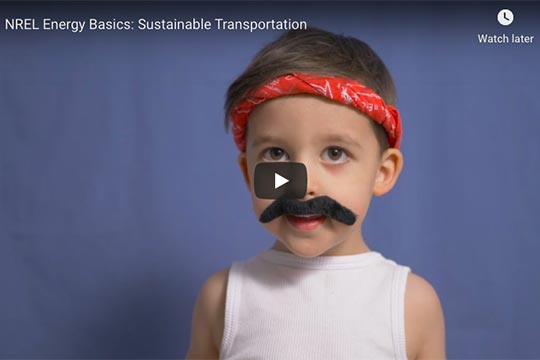Integrated Mobility Sciences Newsletter—Fall 2020
This quarterly newsletter highlights recent projects, partnerships, and publications related to NREL's sustainable mobility research.
Subscribe to receive this newsletter via email.

Sustainable Mobility for the Whole Village
It's a well-known proverb: "It takes a village to raise a child." The saying elevates the role of the community in making lasting change, which might also be said of transforming mobility. We need all of us on board—the whole village—to build the sustainable transportation system of the future.
We've got work to do to achieve that ideal. After all, low-income households frequently own fewer vehicles but spend a greater part of their income on transportation. According to the U.S. Department of Transportation, underprivileged and minority communities also suffer more health impacts due to poor air quality from highways and transportation hubs. To dramatically reduce greenhouse gas emissions in the transportation sector, a diverse spectrum of the population needs access to low- or zero-emission technology solutions—not just those who can afford them.
To meet these challenges, we need to bring another set of questions to the lab bench. How do age, income, gender, race, and education influence how people move about? What barriers, like cost or geographical location, prevent people from adopting low-emission technologies? What are the technical and behavioral levers for making public transportation accessible and energy-efficient?
So while NREL researchers search for a variety of technical solutions to complex mobility challenges—be it vehicle–grid coordination or clean-burning biofuels—we're also thinking deeply about the human elements that motivate mobility—from equity to diversity, social behavior, and beyond.
To truly be sustainable, mobility must serve the whole village—and NREL has a role to play in getting us there.
Drive on,
Chris Gearhart
Director, NREL's Center for Integrated Mobility Sciences
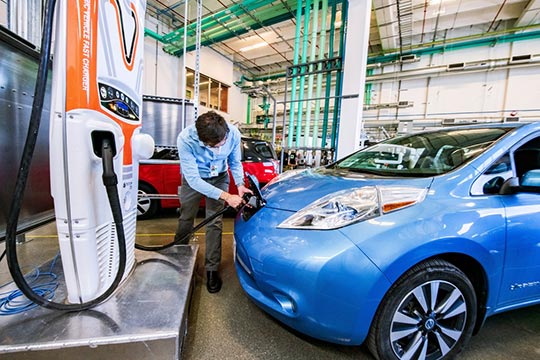
Grid Coordination Opens Road for Electric Vehicle Flexibility
As electric vehicle sales continue to rev up, the electric grid is contending with the greatest transformation in its 100-year history: the large-scale integration of renewable energy and power electronic devices. NREL researchers are unlocking the value of electric mobility technologies to drive efficiency and reliability across the power system. Several NREL projects aim to determine the coordination required for fast charging, balancing electrical supply and demand and the efficient use of all energy assets.
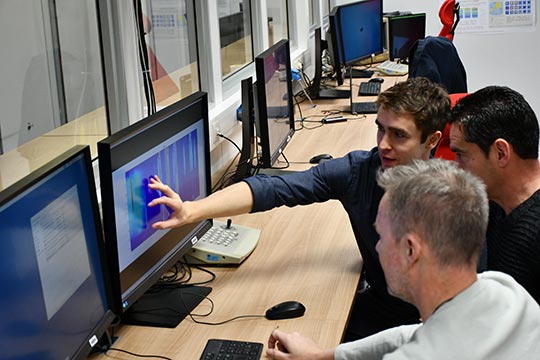
Research Highlights Critical Barriers to Extreme Fast Charging of Lithium-Ion Batteries
NREL scientists recently used high-speed synchrotron X-ray diffraction to gain insight into the conditions that lead to lithium-ion battery (LIB) failure during extreme fast charging, another step toward developing electric vehicles capable of charging in 15 minutes or less. Key findings of the study highlight uneven charging of LIBs, leading to a phenomenon called lithium plating, where lithium attaches to the graphite particles within the cell instead of inserting into the graphite. Once lithium plating has occurred, LIBs are subject to accelerated degradation and increased risk of failure.
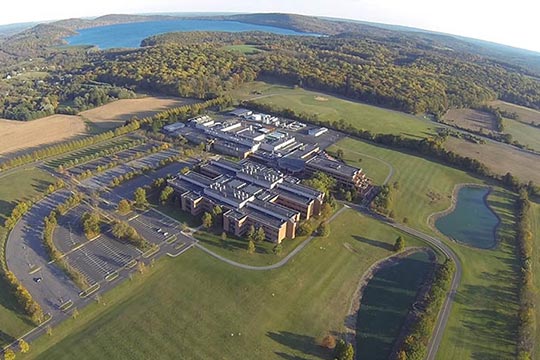
Partnership with ExxonMobil Fuels Innovation
Envisioning a future where clean-burning biofuels fill the role of some petroleum-based fuels, NREL and ExxonMobil are a year into a unique collaboration. ExxonMobil is creating scalable, sustainable fuels that maintain low emissions from production through final use. From increasing the productivity of algae to assessing the performance of bio-derived diesel, the company has invested $100 million over 10 years to fuel innovation and minimize its impact.
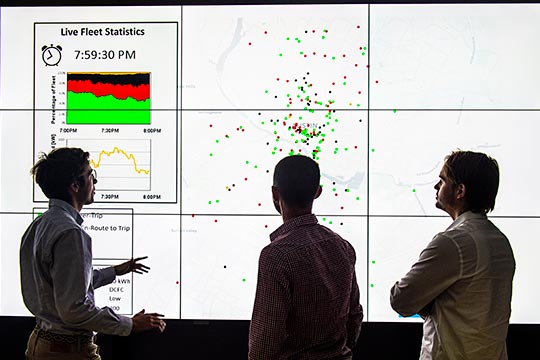
Researchers Explore Charging Flexibility of Shared Automated Electric Vehicles
Although shared automated electric vehicles (SAEVs) offer the possibility for lower costs, reduced emissions, and a better travel experience, their uncoordinated charging could stress the electric grid and increase costs as their market share rises. To mitigate these issues, researchers explored the potential charging flexibility of future SAEV fleets, now in their infancy. The analysis indicates that SAEV charging loads are highly flexible and offer the potential for substantial energy cost savings, ranging from 13% to 46% across various simulated scenarios. Via coordinated charging, the timing of charging events can be shifted to take advantage of lower electricity prices without negatively impacting the fleet's ability to meet the mobility needs of users.
Video Provides Educational Overview of Sustainable Transportation
The future of sustainable transportation relies on domestic alternative fuels, more fuel-efficient engines, electric-drive vehicles, vehicle connectivity, and a grid powered by a variety of renewable and conventional energy sources. At the same time, innovative mobility strategies have the potential to transform the movement of people and goods, enhance national security, and save individuals and businesses both time and money. Looking for an easy way to introduce these concepts to your kids or students? This two-minute transportation basics video offers an introduction to sustainable transportation technologies.
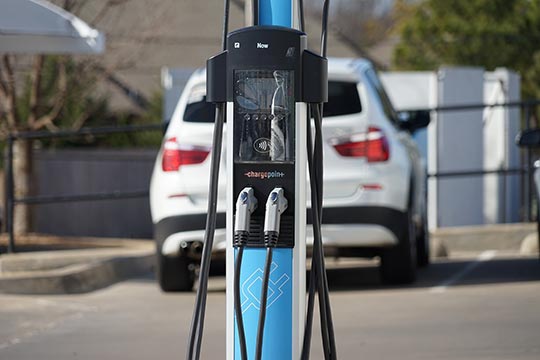
Annual Technology Baseline Expands To Include Transportation Data
NREL, in collaboration with Argonne National Laboratory, released the first-ever Transportation Annual Technology Baseline (ATB), a new go-to source for U.S. vehicle and fuel technologies data. The interactive Transportation ATB provides detailed cost and performance data, estimates, and assumptions for current and future vehicle and fuel technologies and markets through 2050. The added baseline data will support energy analysts in making projections that account for the rapid pace of transportation technology improvement and market advancement.
Get To Know Our Team: Paty Romero-Lankao
Patricia "Paty" Romero-Lankao joined NREL's Center for Integrated Mobility Sciences in 2018 as a senior research scientist in joint appointment with the University of Chicago's Mansueto Institute for Urban Innovation, where she is a research fellow. From a behavioral science perspective, she examines the interactions among people, mobility, the built environment, and energy systems as well as their resilience to disruptive events. She holds a Ph.D. in rural sociology and environment from the University of Bonn in Germany as well as a Ph.D. in urban sociology and regional planning from the Metropolitan Autonomous University in Mexico.

Must Reads
Standard U.S. driving cycles are used for fuel-efficiency and emissions-testing procedures, but the current methods don't consider real-world driving behavior or regional variations. In a recent Transportation Research Part D article, NREL researchers describe a method for determining region-specific real-world fuel economy for light-duty vehicles that is unique in both the size and representation of real-world driving considered and its ability to model regional variations in driving patterns.
NREL researchers recently compiled an in-depth Resource Assessment for Hydrogen Production to evaluate if there are sufficient domestic energy resources to meet hydrogen demand potential in the United States. The report found that finite resources, such as natural gas and coal, have the highest technical potential for hydrogen production. In comparison, the projected increase in hydrogen demand could result in a significant increase in renewable energy consumption. Researchers can use data from this report to optimize existing hydrogen supply chains.
Did You Know?
NREL is expanding its lab space by as much as 20,000 ft2. The U.S. Secretary of Energy Dan Brouillette visited NREL this August to join the groundbreaking ceremony for the Research and Innovation Laboratory, which will be a multipurpose laboratory for cross-disciplinary research ranging from plastics upcycling to next-generation batteries.
The sixth National Hydrogen and Fuel Cell Day is coming up on Oct. 8—10/08—a date chosen to represent the atomic weight of hydrogen (1.008). NREL will be sharing updates on social media throughout the week.
In the News
Citing research by NREL's Matteo Muratori, a Clean Technica article on common EV myths says the national grid has enough capacity to handle more electric vehicles on the road.
Hydrogen cars offer high performance with zero emissions. But what roadblocks remain for getting more on the road? NREL's Keith Wipke offers his expertise in a Popular Mechanics story.
Share

